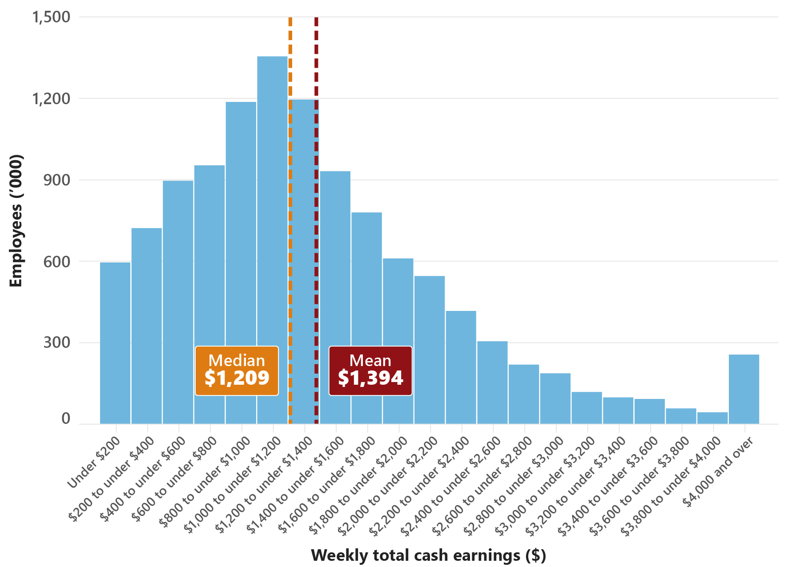Average weekly earnings (Original)
[["Nov-94","Feb-95","May-95","Aug-95","Nov-95","Feb-96","May-96","Aug-96","Nov-96","Feb-97","May-97","Aug-97","Nov-97","Feb-98","May-98","Aug-98","Nov-98","Feb-99","May-99","Aug-99","Nov-99","Feb-00","May-00","Aug-00","Nov-00","Feb-01","May-01","Aug-01","Nov-01","Feb-02","May-02","Aug-02","Nov-02","Feb-03","May-03","Aug-03","Nov-03","Feb-04","May-04","Aug-04","Nov-04","Feb-05","May-05","Aug-05","Nov-05","Feb-06","May-06","Aug-06","Nov-06","Feb-07","May-07","Aug-07","Nov-07","Feb-08","May-08","Aug-08","Nov-08","Feb-09","May-09","Aug-09","Nov-09","Feb-10","May-10","Aug-10","Nov-10","Feb-11","May-11","Aug-11","Nov-11","Feb-12","May-12","Aug-12","Nov-12","Feb-13","May-13","Aug-13","Nov-13","Feb-14","May-14","Aug-14","Nov-14","Feb-15","May-15","Aug-15","Nov-15","Feb-16","May-16","Aug-16","Nov-16","Feb-17","May-17","Aug-17","Nov-17","Feb-18","May-18","Aug-18","Nov-18","Feb-19","May-19","Aug-19","Nov-19","Feb-20","May-20","Aug-20","Nov-20","Feb-21","May-21","Aug-21","Nov-21","Feb-22","May-22"],[[630.10000000000002],[640.10000000000002],[648.20000000000005],[653.20000000000005],[661.20000000000005],[667],[673.79999999999995],[677.20000000000005],[686.10000000000002],[694.20000000000005],[696.29999999999995],[706.29999999999995],[710.60000000000002],[721.39999999999998],[725.70000000000005],[734.70000000000005],[739.5],[742.89999999999998],[748.5],[749.5],[760.79999999999995],[772.10000000000002],[779.10000000000002],[794.10000000000002],[798.10000000000002],[805.89999999999998],[818.79999999999995],[833],[842.60000000000002],[853.89999999999998],[860.10000000000002],[872.39999999999998],[882.10000000000002],[892.5],[912.79999999999995],[920.5],[929.10000000000002],[937.89999999999998],[939],[952],[965],[980.60000000000002],[993.79999999999995],[1009.2],[1011.8],[1023.3],[1025.8],[1037.0999999999999],[1044.0999999999999],[1058.5],[1076.8],[1093.0999999999999],[1098.5999999999999],[1113.0999999999999],[1119.5999999999999],[1144.5],[1158],[1175.5999999999999],[1187.8],[1204.2],[1226.8],[1243.9000000000001],[1250.0999999999999],[1258.8],[1275.2],[1291.3],[1304.7],[1324.9000000000001],[1330.0999999999999],[1348.0999999999999],[1349.2],[null],[1396],[null],[1420.9000000000001],[null],[1437],[null],[1454.0999999999999],[null],[1477],[null],[1483.0999999999999],[null],[1500.5],[null],[1516],[null],[1533.4000000000001],[null],[1543.2],[null],[1569.5999999999999],[null],[1585.3],[null],[1605.5],[null],[1634.8],[null],[1658.4000000000001],[null],[1713.9000000000001],[null],[1711.5999999999999],[null],[1737.0999999999999],[null],[1748.4000000000001],[null],[1769.8]],[[672.60000000000002],[681.10000000000002],[688.79999999999995],[692.70000000000005],[704.39999999999998],[708.5],[716.5],[717.79999999999995],[730.89999999999998],[733.20000000000005],[736.70000000000005],[746],[752.70000000000005],[761.5],[766.89999999999998],[774.89999999999998],[783.5],[782.10000000000002],[788.60000000000002],[787.5],[802.89999999999998],[808.60000000000002],[818.39999999999998],[833.20000000000005],[834.70000000000005],[840.10000000000002],[856.10000000000002],[867.60000000000002],[879.60000000000002],[891.39999999999998],[899.5],[911.60000000000002],[924.70000000000005],[933.10000000000002],[954.29999999999995],[964.70000000000005],[979.20000000000005],[985],[984],[999.79999999999995],[1017.2],[1034.4000000000001],[1047.0999999999999],[1056.7],[1066],[1072.0999999999999],[1073.5999999999999],[1084.3],[1093.8],[1105.0999999999999],[1124.0999999999999],[1141.8],[1151],[1164.9000000000001],[1171.5],[1195.2],[1210.8],[1222.7],[1234.9000000000001],[1250.3],[1276.7],[1290.7],[1300.3],[1309.7],[1328.5],[1343.7],[1357.9000000000001],[1376.2],[1390.5],[1406.8],[1413.0999999999999],[null],[1458],[null],[1482.5],[null],[1500.0999999999999],[null],[1515.8],[null],[1542.4000000000001],[null],[1541.5],[null],[1560.5],[null],[1573.3],[null],[1595.5],[null],[1605.5999999999999],[null],[1632.0999999999999],[null],[1650.5999999999999],[null],[1668.0999999999999],[null],[1695.0999999999999],[null],[1722.8],[null],[1768.9000000000001],[null],[1769.9000000000001],[null],[1797],[null],[1813],[null],[1835.3]],[[542.39999999999998],[549.20000000000005],[548.89999999999998],[548.89999999999998],[555.39999999999998],[563.79999999999995],[565.5],[567.39999999999998],[570.60000000000002],[582.20000000000005],[578.10000000000002],[582.39999999999998],[592.60000000000002],[597.70000000000005],[596],[602.70000000000005],[603.39999999999998],[607.89999999999998],[610.39999999999998],[604.79999999999995],[613],[625],[633.79999999999995],[645.39999999999998],[643.10000000000002],[658.39999999999998],[660.29999999999995],[670.20000000000005],[673.60000000000002],[684.60000000000002],[683.79999999999995],[694.10000000000002],[699.39999999999998],[713.89999999999998],[721.39999999999998],[728.79999999999995],[740.29999999999995],[749.79999999999995],[741.39999999999998],[754.79999999999995],[761.70000000000005],[783.20000000000005],[784.20000000000005],[799.5],[800.60000000000002],[816.5],[819.70000000000005],[830.20000000000005],[837.39999999999998],[857.10000000000002],[858.5],[871.10000000000002],[873.20000000000005],[886.60000000000002],[885],[901.79999999999995],[909.5],[921.10000000000002],[918.60000000000002],[940],[955],[973.79999999999995],[977.10000000000002],[978.39999999999998],[996.10000000000002],[1011.8],[1015.2],[1024.2],[1033.7],[1056.2],[1053.2],[null],[1081.3],[null],[1105],[null],[1114.2],[null],[1123],[null],[1128.7],[null],[1136.9000000000001],[null],[1145.7],[null],[1160.9000000000001],[null],[1163.5],[null],[1179],[null],[1191.5],[null],[1207.4000000000001],[null],[1225.3],[null],[1237.9000000000001],[null],[1257],[null],[1304.7],[null],[1280.3],[null],[1305.8],[null],[1328.9000000000001],[null],[1344.7]],[[null],[null],[null],[null],[null],[null],[null],[null],[null],[null],[null],[null],[null],[null],[null],[null],[null],[null],[null],[null],[null],[null],[null],[null],[null],[null],[null],[null],[null],[null],[null],[null],[null],[null],[null],[null],[null],[null],[null],[null],[null],[null],[null],[null],[null],[null],[null],[null],[null],[null],[null],[null],[null],[null],[null],[null],[null],[null],[null],[null],[null],[null],[1301.4000000000001],[1310.5999999999999],[1327.8],[1344.2],[1357.4000000000001],[1377.7],[1381.4000000000001],[1400.7],[1401.5],[null],[1441],[null],[1464.4000000000001],[null],[1483.5],[null],[1502.5],[null],[1528.4000000000001],[null],[1537.3],[null],[1556.5],[null],[1568.3],[null],[1584.3],[null],[1594.0999999999999],[null],[1615.3],[null],[1631.0999999999999],[null],[1651.3],[null],[1681.5999999999999],[null],[1706.2],[null],[1762.2],[null],[1757.2],[null],[1783.7],[null],[1794.5999999999999],[null],[1816.0999999999999]],[[null],[null],[null],[null],[null],[null],[null],[null],[null],[null],[null],[null],[null],[null],[null],[null],[null],[null],[null],[null],[null],[null],[null],[null],[null],[null],[null],[null],[null],[null],[null],[null],[null],[null],[null],[null],[null],[null],[null],[null],[null],[null],[null],[null],[null],[null],[null],[null],[null],[null],[null],[null],[null],[null],[null],[null],[null],[null],[null],[null],[null],[null],[1351.5],[1361.5],[1381],[1396.5999999999999],[1410.5999999999999],[1429],[1441.8],[1459.4000000000001],[1465.4000000000001],[null],[1503.0999999999999],[null],[1526],[null],[1546.5999999999999],[null],[1564.2],[null],[1593.9000000000001],[null],[1595.7],[null],[1616.5],[null],[1625.5999999999999],[null],[1646.4000000000001],[null],[1656.5],[null],[1677.7],[null],[1696.4000000000001],[null],[1713.9000000000001],[null],[1741.8],[null],[1770.5999999999999],[null],[1817.0999999999999],[null],[1815.5999999999999],[null],[1843.5],[null],[1859.3],[null],[1881.5999999999999]],[[null],[null],[null],[null],[null],[null],[null],[null],[null],[null],[null],[null],[null],[null],[null],[null],[null],[null],[null],[null],[null],[null],[null],[null],[null],[null],[null],[null],[null],[null],[null],[null],[null],[null],[null],[null],[null],[null],[null],[null],[null],[null],[null],[null],[null],[null],[null],[null],[null],[null],[null],[null],[null],[null],[null],[null],[null],[null],[null],[null],[null],[null],[1016],[1017.5],[1035.5],[1051.9000000000001],[1055.0999999999999],[1063.5999999999999],[1072.3],[1096.9000000000001],[1093.5999999999999],[null],[1116.4000000000001],[null],[1140.3],[null],[1151.3],[null],[1161.7],[null],[1168.3],[null],[1179],[null],[1188.9000000000001],[null],[1202.0999999999999],[null],[1203.0999999999999],[null],[1218.8],[null],[1227.0999999999999],[null],[1243.5],[null],[1261.5999999999999],[null],[1275.5999999999999],[null],[1295.4000000000001],[null],[1343.4000000000001],[null],[1316.5999999999999],[null],[1343.5],[null],[1366.5999999999999],[null],[1382.3]]]
[]
[{"axis_id":"0","tick_interval":"","axis_min":"","axis_max":"","axis_title":"","precision":-1,"axis_units":"","tooltip_units":"","table_units":"","data_unit_prefix":"","data_unit_suffix":"","reverse_axis":false}][{"value":"0","axis_id":"0","axis_title":"$","axis_units":"","tooltip_units":"($)","table_units":"($)","axis_min":"500","axis_max":null,"tick_interval":null,"precision":"2","data_unit_prefix":"$","data_unit_suffix":"","reverse_axis":false}]